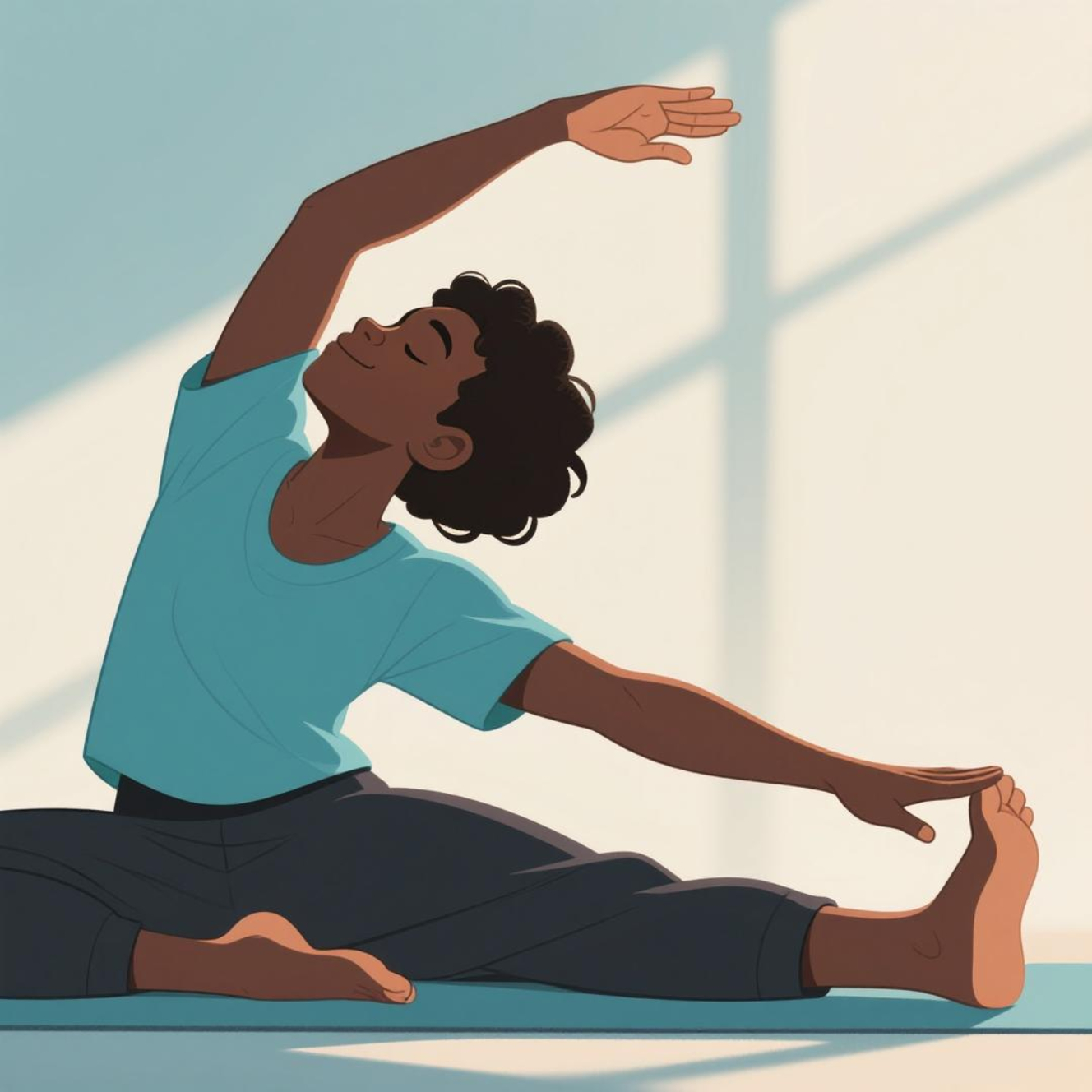Simple and functional stretches are powerful allies for those who want to relieve pain, improve mobility, and regain well-being without leaving home. The best part? They take just a few minutes a day and require almost no equipment.
If you train at home, work sitting down, or simply want to improve your quality of life, stretching regularly can transform your body and mind. I learned this from experience, and today I teach these movements as an essential part of any routine.
In this article, you’ll learn 10 easy, quick, and effective stretches to ease common daily tensions—with clear, straightforward, and realistic instructions.
Why You Should Do Simple and Functional Stretches Every Day
Adding stretches to your daily routine is one of the smartest habits you can develop. In just a few minutes, you can reduce muscle pain, prevent injuries, and even boost your workout performance.
When I started prioritizing stretching, I noticed real changes in my body: less back pain, more mobility when squatting, and an overall sense of lightness. That’s because stretching activates tight muscles, improves blood flow, and helps release built-up tension.
Plus, stretching affects your mind too. It calms you, supports better breathing, and reduces stress. In a fast-paced world, taking a few minutes to stretch is a conscious break that your body and mind will thank you for.
How Stretching Prevents Pain and Boosts Energy
Pain often comes from repetitive habits or poor posture throughout the day. Many people feel discomfort in their neck, shoulders, lower back, or legs—and think it’s normal. But it’s not. It’s your body asking for attention.
Simple and functional stretches target the root of these problems. They unlock stiff joints, relax overworked muscles, and increase flexibility, which improves your natural posture and reduces pressure on your joints.
What’s more, when your body is more mobile, daily activities feel easier. That means climbing stairs without strain, sitting for longer without stiffness, and even sleeping better. It’s a real gain in quality of life—without complication.
Precautions Before Starting Your Stretch Routine
Before beginning any simple and functional stretches, it’s important to understand some basic precautions. Even though these are gentle movements, you should always respect your body’s natural limits.
Start with light activity. A quick warm-up, like marching in place for two minutes, is enough to get your blood flowing. Never push past pain—stretching is meant to bring relief, not cause injury.
If something feels off, ease up or stop. Stretching should bring a feeling of mild tension or release—not sharp pain. And remember: consistency is more important than intensity. Stretching a little every day is far better than overdoing it once a week.
10 Simple and Functional Stretches to Relieve Pain and Tension
Now it’s time to learn the 10 movements I use daily—for myself and my clients. These are to-the-point stretches that relieve common pains and can be done anywhere.
- Neck stretch:
Tilt your head to the side, bringing your ear toward your shoulder. Hold for 20 seconds and repeat on the other side. Great for tension from screen time. - Shoulder rolls:
Roll your shoulders backward and then forward in big circles. Do 10 times each way. This releases tightness in the upper back. - Triceps stretch:
Raise one arm, bend it behind your head, and press it gently with the opposite hand. Hold for 20 seconds and switch arms. Perfect after workouts or typing. - Seated spinal twist:
Sit cross-legged, place one hand on the opposite knee, and gently twist your torso. Hold for 30 seconds and reverse. Helps with lower back mobility. - Standing forward fold:
With legs hip-width apart, bend forward and try to touch your toes. Keep a slight bend in your knees. Stretches the back, hamstrings, and calves. - Cat-cow pose (spine mobility):
On all fours, alternate arching and dipping your back while breathing deeply. Great for spinal activation and release. - Quad stretch:
Standing, grab your foot behind you and pull your heel toward your glute. Keep knees aligned and hold for 20 seconds. Loosens up the front of the thigh. - Glute bridge:
Lie down with knees bent and feet flat, lift your hips and hold for 10 seconds. Strengthens the core, relaxes the lower back, and activates glutes. - Legs up the wall:
Lie down with your legs extended vertically against a wall. Stay for 3 to 5 minutes. Reduces swelling and supports circulation. - Deep breathing with arm stretch:
Inhale while raising your arms, exhale slowly as you lower them. Repeat for one minute. A calming movement to close your session.
Tips to Keep Stretching Safe and Consistent
Keeping up with stretches is more about consistency than effort. The secret is to turn stretching into a light, enjoyable habit that naturally fits into your day.
I like to stretch right after waking up or after a shower. These are times when the body responds well and helps set a calm tone for the day. Choose times that work for you and honor your pace.
And remember—you don’t have to do all the stretches at once. Split them into short sessions throughout the day: morning, post-lunch, or before bed. The important thing is to keep moving and build a routine that supports you without pressure.
Your Body Responds to the Care You Give It
Including simple and functional stretches in your routine is a practical way to care for your body, mind, and physical performance—without needing equipment, a gym, or big commitments.
You don’t need to wait for pain to start. On the contrary: the sooner you bring these movements into your life, the sooner you’ll feel your body responding with ease, energy, and balance.
Start with two or three stretches a day and gradually build your practice. What matters most is staying active, mindful, and connected to what your body needs. Your health will thank you.
